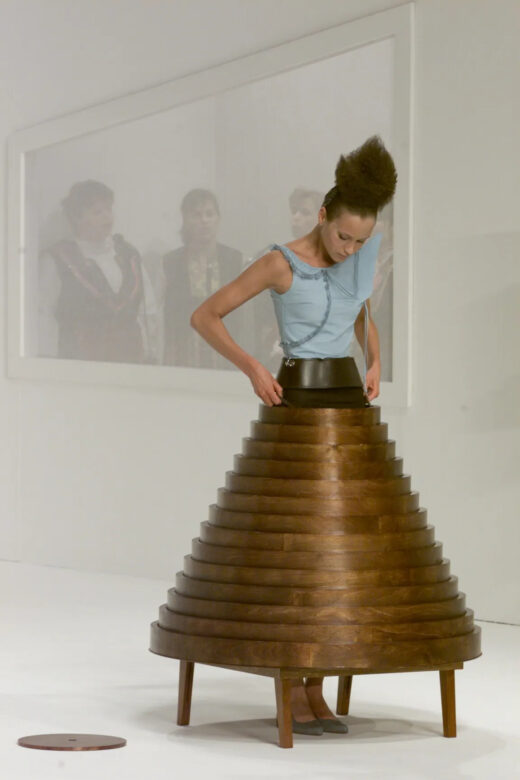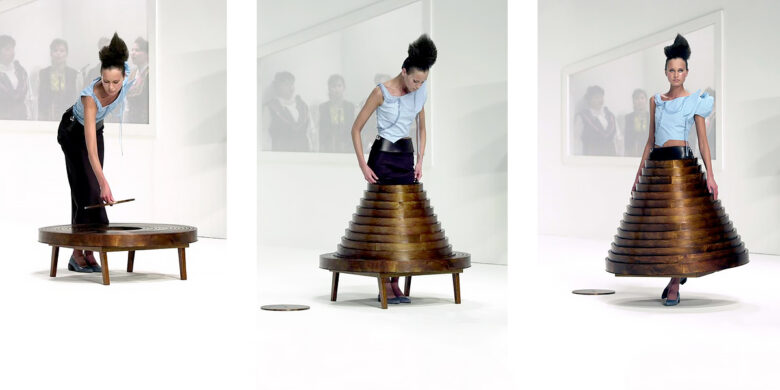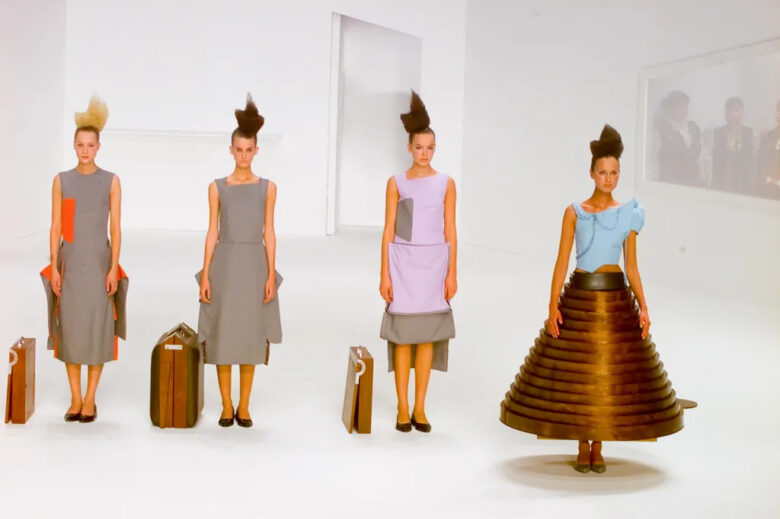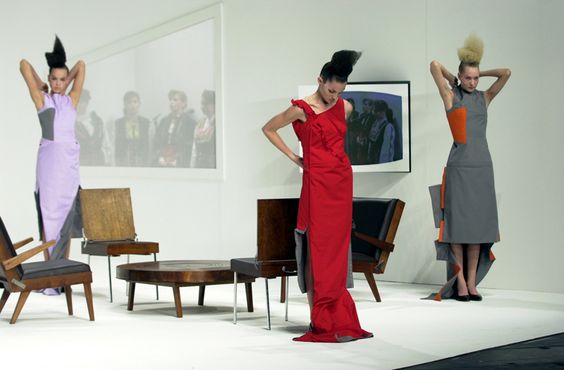Pip pip, fashun friends—I’m writing to you from London where I’ve been taking in the shows as part of so-called fashion month; so-called because isn’t life supposed to be our runway?
Thus far, much of the offerings from New York, London and Milan have been simply beautiful or snoozy, but nothing sensational; and the stranglehold social media has on what designers dare to churn out is as tight as ever. Talk of viral runway moments rages on with ‘90s supermodels hitting the catwalk (Claudia at Versace, hello!), yet there hasn’t been too much in the way of a spectacle.
In anticipation of whatever outrageous orchestrated event is hopefully to come, my mind turns to the popular meme “’high fashion’ fashion shows be like”:
“High Fashion” fashion shows be like..
byu/I_80Mb_At0miKLy inTikTokCringe
What strikes me about this parody is how much it makes me think of the F/W 2000 Hussein Chalayan show, dubbed “After Words,” which was presented in London the February of that year.
It begs the question: Was Chalayan the forefather of meme-able fashion moments before they even existed?
 The Table Skirt from the collection points to “yes.”
The Table Skirt from the collection points to “yes.”
At the climax of a gorgeously minimalist show looks-wise—which featured the likes of of-the-moment models including Erin O’Conner and Devon Aoki (who’s also having a comeback moment, bless), here Chalayan displayed impeccable attention-getting vibes in the show’s second “set.”
After the parade of largely pared-down frocks and separates appeared to culminate, the crowd—which clapped and hooted at several points during the affair, a shocker since people nowadays are too busy on their phones to barely muster end-of-show applause (I’m guilty of it, too)—was treated to some true performance art; the kind that not even the presence of a Jenner can arouse.
Four models appeared, gathering around a retro living room-style set of chairs, a wall mounted television (which broadcast the Bulgarian choir that provided the show’s hypnotic soundtrack), and a coffee table. They were wearing identical, simple frocks and began untethering the chair covers… only to reveal that they were actually garments!
In a landscape where upcycling and repurposing is breathlessly spoken about, the fashion crowd has something to learn from this décor/dress double duty.
The chairs were then folded into a variety of suitcase-style bags. This was all likely too much for spectators to absorb at this point, but Chalayan wasn’t done yet.
A final model stepped out, then stepped into the middle of the table after removing a sphere from its centre. Pulling upwards with two handlebars, it transformed into a tiered skirt that could be affixed to her belt.
 Understandably, the crowd was now emphatic. Chalayan had long been known for adding a dash of theatricality to his collections, but this was beyond.
Understandably, the crowd was now emphatic. Chalayan had long been known for adding a dash of theatricality to his collections, but this was beyond.
So beyond, in fact, that we’re living in a time where this kind of gasp-worthy gesture is essentially expected at a fashion show because of social media’s constant need for elements of exhibitionism to put anything on anyone’s radar.
The surprises feel hollow in their eager commonness, and there doesn’t seem to be a fashion creative bold enough—or that, perhaps, possesses the technical chops—to eschew what the mainstream would go wild for in favor of a genuinely genius weirdo move. Nothing has come close to replicating such witty splendor as Chalayan’s collection.
And while this kind of uncanny creativity can be comically co-opted, Chalayan’s work was done with such sensitivity and brilliance that no joke can dim its shine or diminish its importance. High fashion shows do be like this at the best of times, and these days I wish they did much more often.
OMG, why not wear it? is our column for fashion lovers who are up for anything. It is an inspiration point, a place for dreaming, and a discussion of beauty, weirdness, and thought-provoking design moments as forms of connection. Written by Odessa Paloma Parker (@odessapaloma)



Be the first to comment on "OMG, why not wear it? The table skirt from Hussein Chalayan’s F/W 2000 After Words collection"